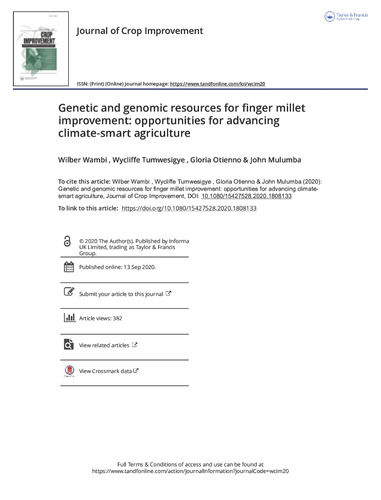Genetic and genomic resources for finger millet improvement: opportunities for advancing climate-smart agriculture
Finger millet (FM; Eleusine coracana (L.) Gaertn.) is becoming increasingly vulnerable to various climate-induced stresses, because of which the genetic and genomic resources will be important for improving the crop in the 21st century. Currently, sizable-untapped genetic resources exists that offer promise for FM improvement to biotic and abiotic stresses. Also, earlier reports elaborate on the potential FM genomic resources, such as molecular markers, genetic maps, and DNA sequence, but the data are scanty to support the efficient and accelerated delivery of the climate-smart FM varieties. This is partly attributable to the delayed availability of complete genome sequence (CGS) of FM. Following the latest developments in FM genomic research, based on the CGS, a diversity of genomic resources have been reported. The review, therefore, provided a detailed analysis on the FM genetic and genomic resources-aided interventions that could contribute to the three pillars of Climate-smart agriculture (CSA) for addressing FM production challenges under changing climate. Exceptionally, it presented enriched information on additional useful sources of variation within FM genetic resources that have been screened for improving FM tolerance to various climate-induced stresses. Also, it presents the novel opportunities for CSA that could come as a result of the recent availability of CGS data for revolutionizing the development of cutting-edge-molecular breeding tools. Specifically, emphasis was placed on genome-wide-based technologies, such as genomic selection (GS), gene pyramiding, and gene expression with the second-generation genomic biotechnologies, such as TILLING and EcoTILLING that are wanting and have received little attention.

